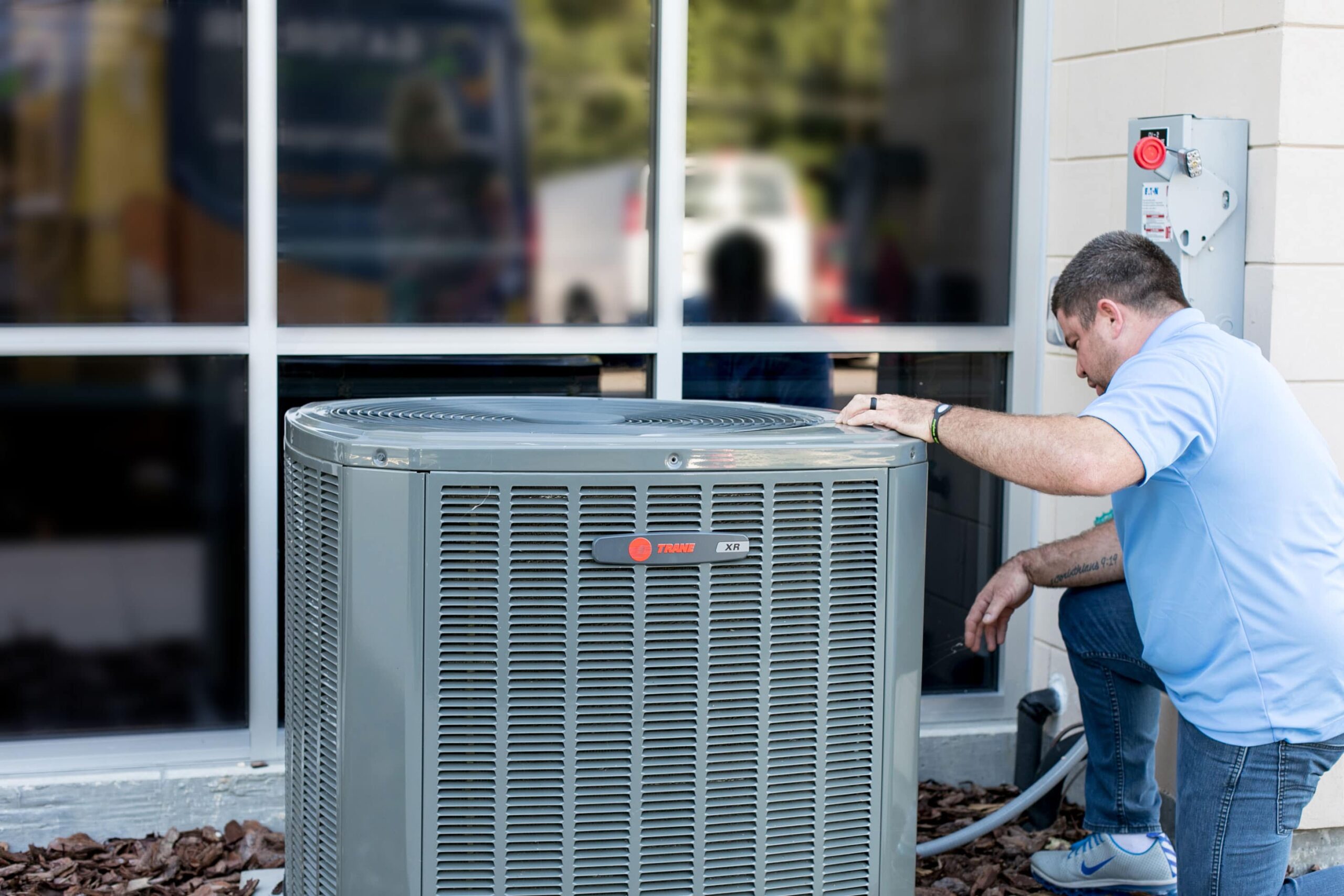In short – yes! In the last decade, air purification systems for HVAC systems have become readily available in a variety of technologies. These include return air duct-mounted electronic air filters and supply duct-mounted air purifiers. Together, these systems can remove 99.98 percent of particles entering the system. The price of these air quality products varies from $450 to $1500 for a complete installation.
Until the outbreak of the Coronavirus, many customers were skeptical of the need for these products but they are now gaining popularity. We have always recommended UV lighting on every new install or as a retrofit when servicing AC systems.
Adding a UV Purifier to Your Home or Business
Mold and bacteria are pesky intruders that ruin indoor air quality. Airborne germs blow past your HVAC system’s filter and circulate around your home or business. Your air conditioning system’s indoor coil is part of what cools your home, but it can also be a hotbed of microscopic misery that affects air quality and a system’s efficiency. Numerous health studies have shown that HVAC UV lights help to kill those bacteria and allergens as they blow through your system.
Electronic air filters are easiest to install when replacing the system as they mount under the air handling unit where the filter typically goes. They generally cost a few hundred dollars more than a supply duct air purifier. Sometimes they can be easily added if you have an exposed air duct to install it in, typically in a garage installation that has a vertical duct. For this reason, the supply duct air purifier with a quality pleated filter is sometimes a better option if a homeowner wants to improve air quality and an electronic air cleaner would be problematic to add to an existing installation.
What Does a UV Light Actually Do?
According to the manufacturers of UV lighting systems, UV light destroys harmful microorganisms, including mold, mildew, fungi, bacteria, and viruses. UV lights are typically installed near your primary AC coil or in your ductwork. Since mold and bacteria don’t like ultraviolet light, microorganisms that pass within the UV bulb’s line of sight will be destroyed.
Although they significantly improve hygiene within an HVAC system, UV lights will not remove odors or remove pet dander and small particles that an electronic air filter in the return air duct captures effectively. They don’t affect or increase the removal of contaminants since they are not filters.
Air purifiers that use a combination of UV lights and activated carbon aren’t filters, but they do remove odors and increase filtration. This is because air purifiers are effective to bind dust particles together and reduce dust in the air. We are often told that air filters have to be replaced more often, or are noticeably dirtier, after the installation of an air purifier.
How Do HVAC UV Lights Work?
There are two types of UV lights for HVAC systems:
- Coil Sterilization – A “stick type†light installed inside the return air duct that sterilizes the air handler coil. A coil sterilization UV light runs 24/7 and is the most common type of HVAC UV light.
- Air Sterilization – A complete UV light unit that sterilizes moving air. The UV light unit is installed in the return air duct and cycles on with the air handler blower.
Benefits of HVAC UV Lights
UV lamps are proven to minimize the microbial build-up on coils, improving system efficiency. While the main benefit of HVAC UV lights is improved indoor air quality, there are many other benefits including:
- Mold and bacteria control.
- Reduced cold and flu outbreaks – germs are not recirculated by the HVAC system.
- Reduced smells/odors.
- Removal of VOCs.
- Reduced clogging in condensate drain lines by preventing algae growth.
- Cleaner coils, improving cooling efficiency and reducing electricity costs.
- Serving as secondary allergy prevention, especially where airborne allergens are concerned.
HVAC UV light fixtures are designed to serve as HVAC air cleaner systems, but Ultraviolet lighting does not clean HVAC systems and should not be used as a substitute for HVAC duct cleaning.
Improve Your Indoor Air Quality
Gator Air and Energy can install a UV light quickly and effectively into your air conditioning unit, and during annual HVAC system checkups, we can replace them as well, which makes maintenance of the UV light practically effortless. For more information on UV light installations and indoor air quality services contact us.






